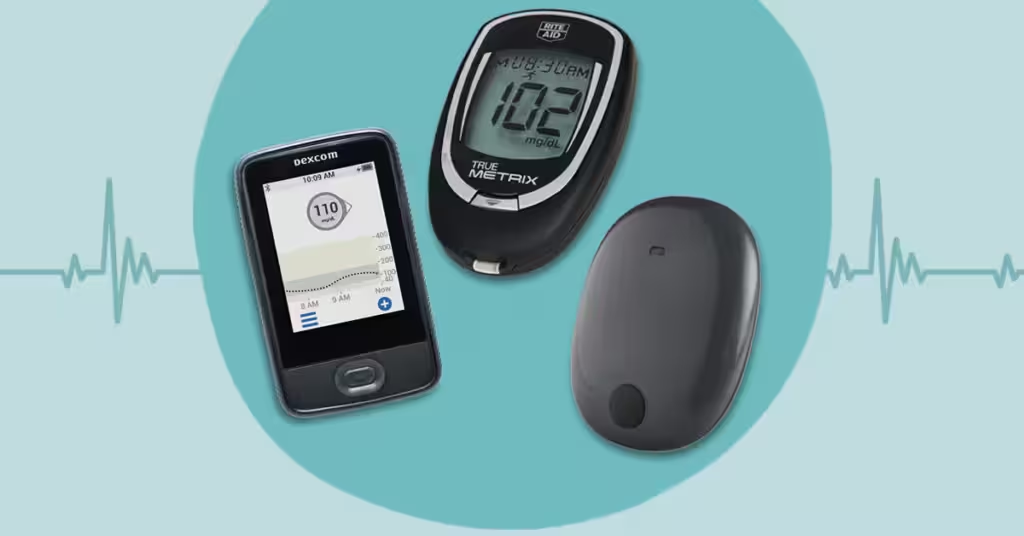Continuous Glucose Monitoring (CGM) technology has emerged as a game-changer in diabetes management, offering real-time insights into blood glucose levels. However, effectively navigating CGM technology requires careful consideration of safety measures and best practices. In this guide, we’ll explore how you can safely utilize CGM technology for blood glucose monitoring, ensuring optimal outcomes for managing your diabetes.
Understanding CGM Technology for Blood Glucose Monitoring
CGM technology for blood glucose monitoring utilizes sensors inserted under the skin to measure glucose levels in interstitial fluid. These sensors continuously transmit data to a receiver or smartphone app, providing users with real-time information about their glucose levels. Understanding the fundamentals of CGM technology is essential for maximizing its benefits and ensuring safe usage.
Ensuring Calibration and Accuracy
Proper calibration is critical for the accuracy of CGM readings. Most CGM systems require regular calibration with fingerstick blood glucose measurements. By following the manufacturer’s instructions for calibration and performing it as recommended, you can maintain the accuracy of your CGM readings and make informed decisions about your diabetes management.
Selecting the Right Site for Sensor Insertion
Choosing the appropriate site for sensor insertion is essential for accurate readings and user comfort. Common insertion sites include the abdomen, upper buttocks, and back of the upper arm. Ensuring proper insertion technique, such as inserting the sensor at a slight angle, can minimize discomfort and enhance sensor stability, contributing to a safer and more effective CGM experience.
Maintaining Skin Care and Hygiene
Proper skin care is crucial for preventing skin irritations or infections associated with CGM use. Before sensor insertion, ensure that the skin is clean and dry, and avoid using lotions, oils, or adhesive removers near the insertion site. By prioritizing skin hygiene and following recommended precautions, you can minimize the risk of skin complications and ensure the safe use of CGM technology.
Customizing Alerts and Alarms
Most CGM systems are equipped with customizable alerts and alarms to notify users of hypo- or hyperglycemic events. Setting these alerts according to your individual glucose targets and preferences is essential for timely intervention and glucose management. Regularly reviewing and adjusting alert settings can help you stay informed and proactive in managing your blood glucose levels safely.
Interpreting Data and Taking Action
Effectively interpreting CGM data is key to optimizing diabetes management. Familiarize yourself with different trends and patterns in glucose readings, such as spikes or trends over time. Use this information to make informed decisions about your diet, exercise, insulin dosing, and other aspects of diabetes self-care, ensuring proactive management of your blood glucose levels.
Regular Monitoring and Follow-Up
Regular monitoring of CGM data is essential for detecting trends and identifying areas for improvement in diabetes management. Review your CGM reports regularly and share them with your healthcare team for feedback and guidance. Schedule regular follow-up appointments with your healthcare provider to discuss your CGM data and make any necessary adjustments to your treatment plan, ensuring ongoing safety and effectiveness in using CGM technology for blood glucose monitoring.
More Read About: Can CGMs Elevate Type 1 Diabetes Management Through Goal Setting?
Navigating CGM Technology for Blood Glucose Monitoring Safely
Continuous Glucose Monitoring (CGM) technology offers invaluable insights into blood glucose levels, but ensuring its safe use is paramount for effective diabetes management. Here’s how to navigate CGM technology safely:
CGM systems consist of sensors that measure glucose levels in interstitial fluid. Proper calibration, usually requiring regular fingerstick blood glucose measurements, is essential for accuracy. When inserting the sensor, choose a suitable site like the abdomen or upper arm, ensuring proper technique to minimize discomfort.
Maintaining skin hygiene before insertion helps prevent skin irritations or infections. Customize alerts for hypo- or hyperglycemic events according to personal glucose targets. Regularly review and adjust alert settings to stay proactive.
Interpreting CGM data accurately is crucial. Learn to identify trends and patterns in glucose readings to make informed decisions about diet, exercise, and insulin dosing. Regularly monitor CGM reports and consult healthcare providers for feedback and adjustments to the treatment plan.
By following these guidelines, individuals can safely navigate CGM technology, optimizing blood glucose monitoring and improving overall diabetes management.
conclusion
safely navigating CGM technology for blood glucose monitoring requires attention to calibration, site selection, skin care, alert customization, data interpretation, and regular monitoring. By following these essential guidelines and best practices, you can optimize the safety and effectiveness of CGM technology in managing your diabetes, ultimately improving your quality of life and well-being.


